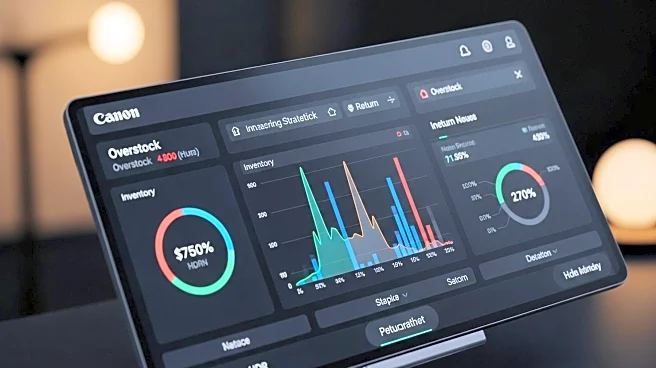What is the story about?
What's Happening?
Bain & Company has released a report forecasting that holiday retail sales for November and December will grow by 4% year over year, surpassing $975 billion. This growth rate is below the 10-year average of 5.2%. In-store sales are expected to increase by 2.75% from last year, with significant gains in apparel, accessories, general merchandise, and health and personal care sectors, each projected to grow at least 5%. Non-store sales, including e-commerce and mail orders, are anticipated to grow by 7% year over year, a slowdown compared to the 9% to 10% growth seen in the past two years. Despite this slowdown, non-store sales are expected to account for half of the overall sales growth this season.
Why It's Important?
The forecasted growth rate indicates a cautious consumer sentiment heading into the holiday season, influenced by economic uncertainty and financial pressures. Retailers are expected to navigate these challenges by balancing value offerings and leveraging technology to enhance consumer experiences. The report highlights that 82% of consumers plan to cut back on essential items to afford holiday gifts, and credit card delinquencies have risen, particularly among consumers under 30. This economic strain could impact spending patterns, with Gen Z expected to reduce their holiday spending by nearly a quarter compared to last year.
What's Next?
Retailers may focus on strategic initiatives to capture market share during key shopping events like Black Friday and Cyber Monday. The Bain report suggests that 10% more consumers will shop during these events, driven by value considerations. Retailers might also implement new technologies to attract cautious consumers, such as AI tools for price comparison. The evolving consumer behavior and financial pressures could lead to shifts in retail strategies, emphasizing value and personalized experiences.
Beyond the Headlines
The report underscores the broader economic challenges facing consumers, including rising credit card delinquencies and financial strain. These factors may lead to long-term shifts in consumer spending habits, with increased reliance on technology for shopping decisions. Retailers might need to adapt to these changes by enhancing digital engagement and offering competitive pricing to maintain consumer interest.
AI Generated Content
Do you find this article useful?














